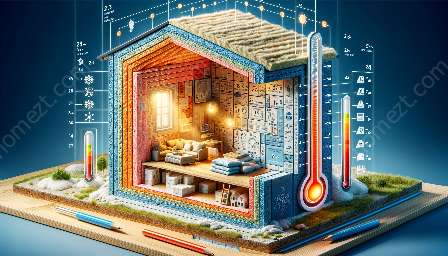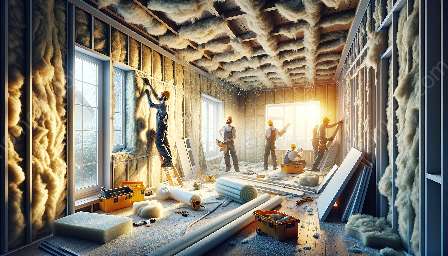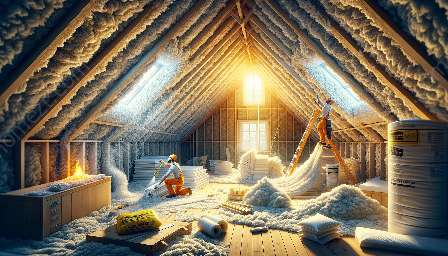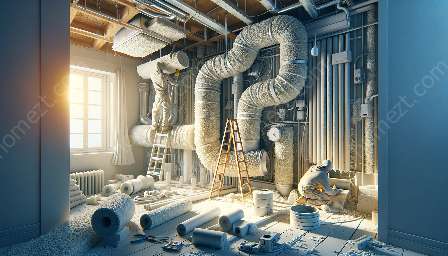Proper insulation in attics and lofts is an essential component of home improvement, providing a range of benefits from energy efficiency to creating a more comfortable living environment. In this topic cluster, we will delve into the importance of insulating attics and lofts, the different insulation materials available, and the step-by-step process of insulating these spaces.
Why Insulate Attics and Lofts?
Insulating the attic and loft spaces in your home is crucial for several reasons. One of the primary reasons is to improve energy efficiency. Heat rises, and without adequate insulation, a significant amount of heat can escape through the roof, leading to higher energy bills and a less comfortable home.
Furthermore, proper insulation can help regulate the temperature within the home, keeping it warmer in the winter and cooler in the summer. This can lead to a more comfortable living environment and reduce the strain on heating and cooling systems.
Types of Insulation Materials
There are various insulation materials available for attics and lofts, each with its own advantages and considerations. Common types of insulation materials include fiberglass, cellulose, spray foam, and mineral wool. Understanding the characteristics of each material can help homeowners make informed decisions about the best insulation for their specific needs.
Fiberglass Insulation
Fiberglass insulation is one of the most popular and widely used insulation materials. It is available in batts, rolls, or blown-in form and offers excellent thermal resistance. Additionally, it is relatively affordable and easy to install, making it a popular choice for many homeowners.
Cellulose Insulation
Cellulose insulation is made from recycled paper and treated with fire-retardant chemicals. It has good insulating properties and is known for its eco-friendly characteristics. Cellulose insulation is often blown or sprayed into attic and loft spaces, providing effective coverage and thermal performance.
Spray Foam Insulation
Spray foam insulation is known for its ability to seal air leaks and create airtight insulation. It expands upon application, filling gaps and cracks to provide a superior barrier against heat transfer. While spray foam insulation tends to be more expensive, its high R-value and air-sealing properties make it a desirable option for many homeowners.
Mineral Wool Insulation
Mineral wool insulation, which includes both rock wool and slag wool, is a versatile and durable insulation material. It provides excellent fire resistance and soundproofing qualities, making it suitable for attics and lofts where these attributes are important. Mineral wool insulation is moisture-resistant and does not promote mold or mildew growth.
Insulating Process
The process of insulating attics and lofts involves several steps, from preparing the space to selecting and installing the insulation material. It's important to assess the existing insulation, air leaks, and ventilation in the attic before proceeding with the insulation project. Here are the typical steps involved in insulating attics and lofts:
- Assessment: Evaluate the current insulation and identify any air leaks or ventilation issues.
- Preparation: Clear the attic space of any debris and obstructions to ensure a smooth installation process.
- Ventilation and Air Sealing: Address any ventilation and air sealing needs to create an efficient and healthy attic space.
- Insulation Material: Select the appropriate insulation material based on the specific requirements and considerations for the attic or loft.
- Installation: Install the chosen insulation material, ensuring proper coverage and sealing of gaps and voids.
- Finishing Touches: Complete the insulation project with any necessary finishing touches, such as adding insulation barriers or protective measures.
Conclusion
Insulating attics and lofts is a valuable investment for homeowners seeking to improve energy efficiency, create a more comfortable living environment, and enhance the overall performance of their homes. By understanding the importance of insulation, the available materials, and the insulating process, homeowners can make informed decisions to achieve a well-insulated and energy-efficient home.





















